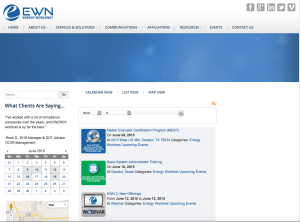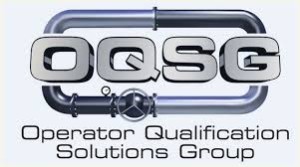Midstream TQ Client FAQ
What other clients are currently using Midstream TQ?
Colonial Pipeline and Kinder Morgan are currently the two clients that are using the Training
Qualifications tool in ISNetworld to track additional safety information on their contractors.
What activities are required of my contractors by the May 6th, 2016 deadline?
Midstream TQ is a phased implementation and only the CORE training activity is required to be
completed by May 6th. Future communications will outline the action required for phase 2.
What circumstances warrant an override? Do contractors initiate it or the client?
The contractor will not be able to initiate, this is for the client internally and will only be applied by the
client. Its main function is an emergency override to allow the client to have the ability to get a contractor
onsite and without them having to take all the trainings at that point in time. It will be used sparingly at the
client’s discretion and we do not expect for it to be used often.
Why are we requiring both OQ and TQ for our contractors?
OQ is only for DOT covered tasks, TQ is used to track basic trainings on all contractors and their
employees. These are also awareness trainings and do not constitute a competent person. As the TQ
matrix is based off OSHA requirements and industry standards, there is an expectation that the contractor
should have most of these trainings in the first place.
How will we as clients be tracking this information?
This is up to the discretion of each client, however it has been communicated that contractors will be
required to submit TQ Reports to clients. At a future date contractors will need to have them readily
available when coming onsite.
What contractors are required for this initiative?
This is a requirement for all connected contractors in ISNetworld. If you do not believe the contractor
should be required to submit information to you as a client, then it is up to the client to inactivate the
contractor.
Our contractors are telling us that this information is proprietary and they cannot give out this information.
The only information that is required to be entered into ISNetworld is the employee’s name, the training
they received, and the date. No documents are required to be submitted.
Why are there 4 activities (CORE, Barge, NDT, and Office Worker) on the TQ report when contractors are only
submitting CORE?
Since Barge, NDT, and Office Worker have no activity specific trainings, their qualification methods are
the same as the CORE training. Once a contractor is qualified for CORE, they will also be qualified for
those 4 activities, even if they are not assigned to that activity.
What is the “Hiring Client Specific Contractor Orientation (If Applicable)”?
This is a qualification specific to each client that represents contractor orientations. For Kinder Morgan,
contractors are responsible uploading this qualification once they have completed the
orientation. Colonial will be responsible for uploading this qualification for their contractors.
Can contractors be qualified through in-house trainings?
Yes – contractors have the ability to qualify in-house or even by other providers and they would add those
trainings accordingly. If a contractor’s in-house training covers all the components of Core, they have the
ability to upload the “New/Annual Employee Orientation” to qualify for all of Core.
PHMSA Proposes New Safety Regulations for Natural Gas Transmission Pipelines
U.S. proposes new gas pipeline safety rules
Introduction to Pipeline (PEC Training)
Do you have short service employees or employees new to the Oil and Gas Industry? Safetek Services is now an authorized provider of a new PEC training product called “Intro to Pipeline”. Training is available beginning August 1, 2015. This is a concise, informative summary of our industry and DOT regulations required to work. Call to schedule today! Toll free 877-923-3835
Electronic Code of Federal Regulations
 http://www.ecfr.gov/cgi-bin/text-idx?SID=1d49a3b137cb1b6fc45251074e634b44&c=ecfr&tpl=/ecfrbrowse/Title49/49cfrv3_02.tpl
http://www.ecfr.gov/cgi-bin/text-idx?SID=1d49a3b137cb1b6fc45251074e634b44&c=ecfr&tpl=/ecfrbrowse/Title49/49cfrv3_02.tpl
Electronic Code of Federal Regulations

e-CFR data is current as of June 12, 2015
Subtitle B—OTHER REGULATIONS RELATING TO TRANSPORTATION (CONTINUED)
|
OSHA just updated their heat monitoring app….check out the link to download it to your phone!
 Heat Safety Tool
Heat Safety Tool
By U.S. Department of Labor (DOL), Occupational Safety and Health Administration (OSHA)
When you’re working in the heat, safety comes first. With the OSHA Heat Safety Tool, you have vital safety information available whenever and wherever you need it – right on your mobile phone.
The App allows workers and supervisors to calculate the heat index for their worksite, and, based on the heat index, displays a risk level to outdoor workers. Then, with a simple “click,” you can get reminders about the protective measures that should be taken at that risk level to protect workers from heat-related illness-reminders about drinking enough fluids, scheduling rest breaks, planning for and knowing what to do in an emergency, adjusting work operations, gradually building up the workload for new workers, training on heat illness signs and symptoms, and monitoring each other for signs and symptoms of heat-related illness.
Working in full sunlight can increase heat index values by 15 degrees Fahrenheit. Keep this in mind and plan additional precautions for working in these conditions.
The OSHA Heat Tool is available in Spanish for Android and iPhone devices. To access the Spanish version on the iPhone, set the phone language setting to Spanish before downloading the app.
Stay informed and safe in the heat, check your risk level.
For more information about safety while working in the heat, see OSHA’s heat illness webpage, including new online guidance about using the heat index to protect workers.
The source code for this app is available for download:
- Android: English (ZIP*) | Spanish (ZIP*)
- iPhone: All-in-One (ZIP*)
PUBLIC LAW 112–90—JAN. 3, 2012 125 STAT. 1919
SEC. 25. PIPELINE SAFETY TRAINING FOR STATE AND LOCAL GOVERNMENT PERSONNEL.
(a) IN GENERAL
 —To further the objectives of chapter 601 of
—To further the objectives of chapter 601 of
title 49, United States Code, the Secretary of Transportation may
provide the services of personnel from the Pipeline and Hazardous
Materials Safety Administration to provide training for State and
local government personnel at a pipeline safety training facility
that is established and operated by an agency or instrumentality
of the United States, a unit of State or local government, or an
educational institution.
ENERGY WORLDNET EVENTS
OQ
Classes are available now for OQ Training








